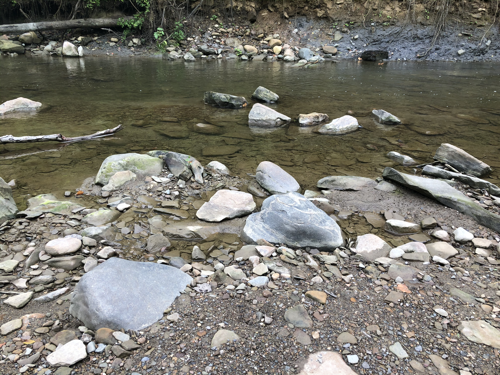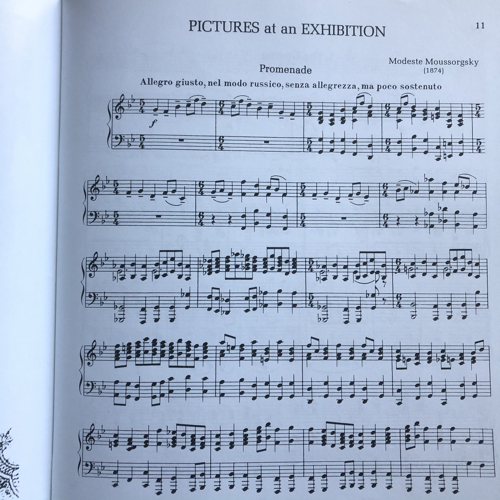Why does this thing exist?
When the iPad was first introduced, I didn’t get it. It seemed like it wanted to fill a gap that wasn’t there. At that point in time, I was using my iPhone for everything mobile and my MacBook Pro for the heavy lifting. I didn’t see much point to trying to create a space between the two simply for the sake of filling it. Some of my friends felt the same way. Then I got my hands on one and it made complete sense.
To be clear, this device is still very new and the paradigm that it represents is fresh. It’s much more than a big iPhone and at the same time isn’t always less than a laptop. It does have a place and that place is becoming better defined every day.
This isn’t gadget pr0n. I swear.
When I was still hacking away in graduate school, I came across several attempts at touchscreen interfaces. They were first on the order of $10,000 and about a decade later dropped to the $1500 range. And that was for the interface and not the software or the synth hardware that was needed to use it. Regardless of what are now obviously crushing limitations, I got what that could do. Or I thought that I did.
The iPhone interface grabbed me because I could see in an instant how cool it would be to draw sound. TouchOSC does a great job of making that happen. On the iPad, it’s even better. I can control Logic sessions. I can pipe gestures to PureData over wifi. For experimental performers and anyone who does live sound the advantages and pure coolness are obvious. It’s enough to get a lot of music nerds to shell out for the Apple Developer License program and a pile of books to learn Objective-C. Certainly enough to drop about $50 for a catalog of apps that make this dream a reality.
If you’re really into that sort of thing, Curtis (bonus points for being named for Curtis Roads), Gliss, and DopplerPad are great apps to pick up. Why? Because they let you make cool sounds by moving your fingers and that’s what it’s all about. They turn the iPad into a unique musical instrument.
But where the iPad really shines for me is in sketching. And I have to say that my favorite tool is also the source of most of my frustration: GarageBand.
GarageBand
What can I do with GarageBand? Well, I can set up some smart instruments and play with chord patterns. I can take my songs and experiment with drums or bass. I can tweak some synth action that can all be sent over to my Mac, opened in GarageBand, and then sent to Logic for real work (yes, you can skip GarageBand on the Mac but I don’t for a host of reasons whose discussion is for another time). This is great. The interface is amazing for plunking out melodies and picking chord structures (in a well defined key and standard time signature – sorry prog rockers!).
What can’t I do? Well, I can’t take a GarageBand project that I tweak on my Mac and put it back onto the iPad. I understand why. The iPad version is limited to 8 tracks. There are issues with audio data formats. A lot of the innards are just different. But the fact that it’s so easy to create a project and get some momentum going on the iPad is what results in powerful frustration once I hit that first hurdle. It wrecks what could be a really, really nice workflow and replaces the opportunity for doing serious work with a piece with a host of words that make me question the parentage of the product. In short, it does everything so well that it’s a given that it should take it the whole way. That’s actually a compliment for creating a product so great that I just assume that it will do it all. But more than a compliment it’s a source of raging frustration. Yeah, it’ll get there…but I’m here now.
Life after GarageBand
So what do I do about it? Enter Studio.HD. It’s primarily aimed at folks who dig on loops. I don’t, but that doesn’t make it any less useful for me. I can take AIF or WAV files from my Mac and put them into the app via iTunes sharing (OH DEAR LORD PLEASE STOP THE PAIN!!! PLEASE COME UP WITH A BETTER WAY TO GET STUFF INTO MY APPS!!! I AM BEGGING YOU!!!) and then drop them into a multitrack environment that allows me to move snippets around and experiment with my arrangements. It’s really, really easy to use and puts a lot of power into such a tiny device.
The other thing that is great about Studio.HD is that it uses the Sonoma’s Audiocopy. That means that I can pull audio from a number of apps into Studio.HD and make cool things happen. One example is Korg’s iMS-20. It’s a modular synthesizer with a delicious interface that lets me dork around with stuff that I would only dork around with if I had it in my lap. And I do. So I do.
Studio.HD also has just enough features and effects to make working with it worthwhile. Would I use it to produce an album? Maybe. On a desert island. Or as my time for pursuing certain activities becomes so limited that I only have the seconds and minutes I can scrape together between explaining, yet again, Luke Skywalker’s family tree and checking to make sure that the house isn’t on fire. Please don’t take this as disparaging the app. It’s amazing and for $10 you can’t really go wrong.
Bottom line
I’ve mentioned before [link to last post] that I don’t have time for things that don’t work. This really comes down to the fact of my life (and maybe yours too) that I don’t have time. Period. The iPad has become my new way of feeling good about myself and my creative progress. I can open it at a moment’s notice and close it up just as quickly.
And it goes everywhere with me. I’m waiting for the man-bag to come into its own to the point where my son doesn’t refer to my messenger bag as “daddy’s purse.†I need to have it with me. It’s not an addiction like the smart phone early adopters, but rather a mature need to have what I do with me all the time so that I can feel like what’s important to me is not only in my mind, but also at my fingertips when I have a few minutes. If I can push a project along even a little bit while I’m at lunch or waiting for the doctor or even with a sleeping baby on my lap, then the device has more than paid for itself.
Apps
If you are a musician and you have an iPad, then at the bare minimum you owe yourself GarageBand and Studio.HD. For the grand total of about $15, you’ll have that imaginary studio in your hand that we were promised along with flying cars and meals in pill form.

